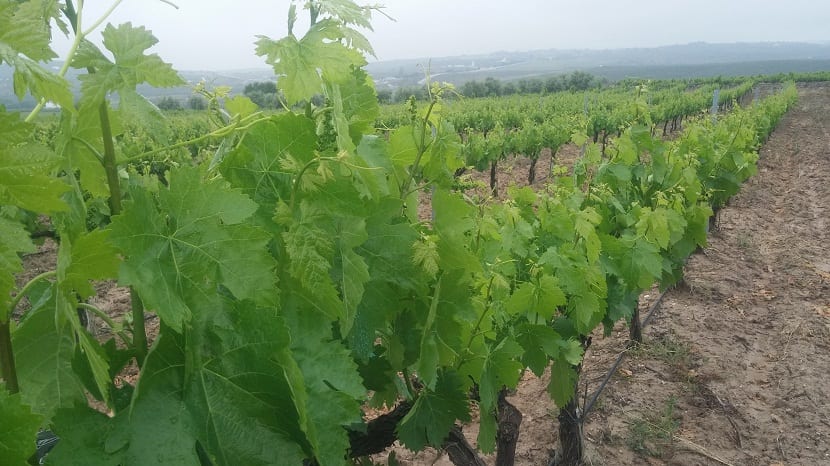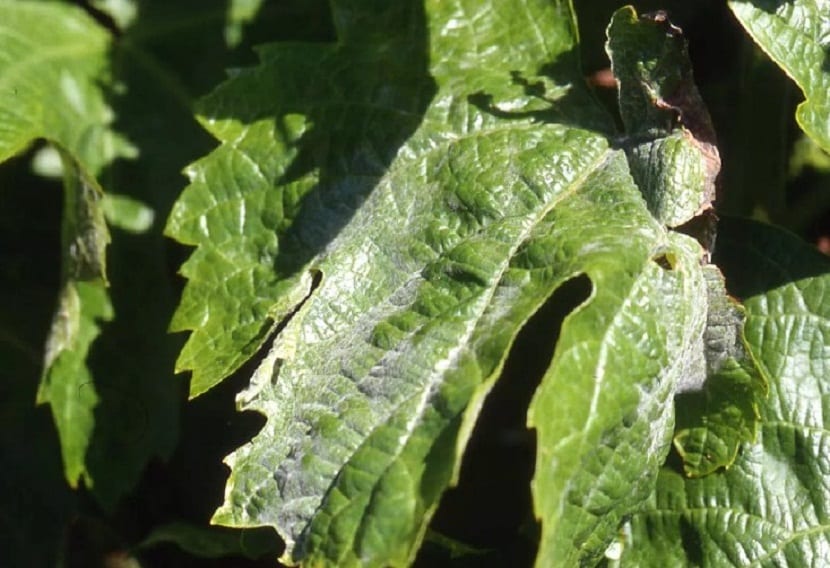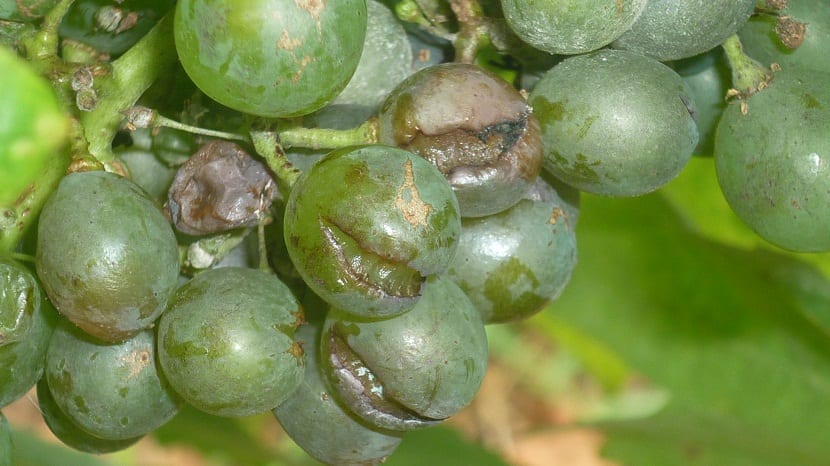
Powdery mildew is about a disease that occurs due to a fungus called Uncinula necator Burr, which, although it is from North America, is quite widespread throughout Spain.
As with all fungi, if the environment and climate are conducive for them to develop, may occur in certain susceptible varieties, even the complete loss of the harvest and is that unlike the mildew, the powdery mildew requires high temperatures, a dry environment free of any humidity or cool nights.
How is powdery mildew preserved in the vineyard?

The powdery mildew it can be conserved in 2 ways, which are:
En mycelium state inside the shoots.
En state of peritecas, as resistant organs and on the surface of the shoots.
During spring, the fungus penetrates the branches of the contaminated shoots. The mycelium filaments develop in the green organs, which they contaminate through haustoria. If the environmental environment is conducive, the mycelium emits conidia, which develop on top of healthy organs and are located near those contaminated organs, causing them to germinate and allowing the disease to spread.
What are the symptoms and damages caused by Powdery Mildew?
The fungus that causes powdery mildew, affects each of the green organs of the vineHowever, it most commonly affects shoots, branches, and clusters.
The symptoms and damage that generally cause powdery mildew are:
In sheets

It is possible to perceive a ash-white powder on the back and in the upper part of the leaf, which could end up covering it completely and under the dust you can see some necrotic spots. In some cases, at the beginning of the attack some small spots that look like oil in the beam, accompanied by some dark spots.
When it comes to acute attacks, leaves appear contracted or bent and totally covered by dust on the beam and the back of them.
In shoots and shoots
Symptoms of powdery mildew usually present as small fuzzy spots of a green hue dark, which increase in size and turn brown as the vegetation blooms and then turns black when the shoot lignifies.
In clusters

At the beginning of the disease the grains they turn a leaden hue and after a while, they are completely covered by the grayish dust that is made up of the organs of multiplication of the fungus, known as comidia, below which are usually some necrotic tissues of a darker shade.
The most important damage caused by powdery mildew is generally found in the bunches, because the intense attacks cause the development of the skin to stop and consequently the skin and the fruit of the vine crack.
Ways to eliminate powdery mildew
It is necessary to make use of pruning in green in order to increase aeration, since in this way it is possible to form an unfavorable atmosphere for the development of the fungus and also, it is allowed that fungicides penetrate the soil, being the only possible way to eliminate the fungus that causes powdery mildew.
Similarly there are a large number of products and control strategies which are of great help when it comes to eliminating powdery mildew using chemical products and one of the most used products in this case is powdered sulfur, which if placed in the right way and at the right time, is quite effective in eliminating the fungus.
The best way to do it is apply it during spring when the temperature is above 18ºC and during the summer when it does not exceed 35ºC.